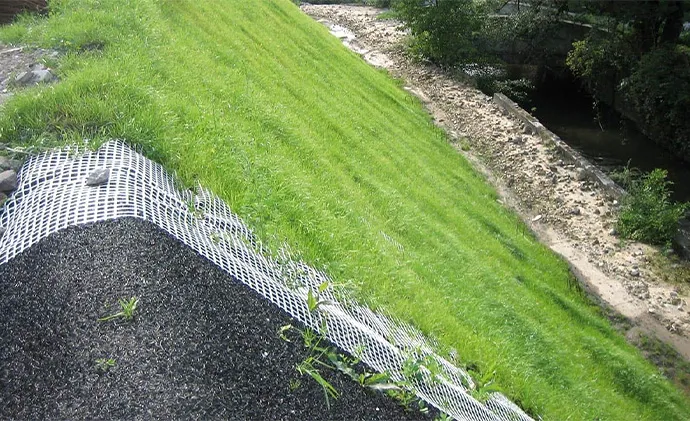-
 Phone:
Phone: -
 Email:
Email:

wire mesh for rock walls
The Role of Wire Mesh in Rock Walls A Comprehensive Overview
Rock walls are significant structures that serve various purposes, including erosion control, landscape aesthetics, and structural support. To ensure their stability and longevity, many engineers and builders incorporate wire mesh into the design. This article explores the importance of wire mesh for rock walls, detailing its benefits, applications, and installation methods.
Understanding Wire Mesh
Wire mesh is a grid-like structure made from interconnected metal wires. It comes in various sizes and strengths, allowing for its use in numerous applications. In the context of rock walls, wire mesh serves as a reinforcing agent that enhances the overall strength and stability of the wall. Its main forms include welded wire mesh and hexagonal mesh, each with its unique properties suited to specific requirements.
Benefits of Using Wire Mesh
1. Enhanced Structural Integrity One of the primary benefits of wire mesh reinforces the structural integrity of rock walls. It provides additional support, preventing individual stones from shifting or collapsing under pressure. This reinforcement is particularly crucial in areas prone to heavy rain or seismic activity.
2. Erosion Control Rock walls are often constructed in environments exposed to erosion. Wire mesh can hold soil and loose rocks in place, significantly reducing the chances of landslides and erosion. The mesh acts as a barrier, keeping the soil intact even when saturated with water.
3. Flexibility in Design Wire mesh is highly adaptable and can be molded to fit various wall designs. Whether it’s a natural landscaping element or a more engineered solution, wire mesh can be adapted to meet specific project requirements without compromising aesthetics.
4. Cost-Effectiveness Using wire mesh can be a more economical option than other forms of reinforcement. While it contributes significantly to the overall durability of rock walls, the materials used are relatively inexpensive, and the installation process can be streamlined to achieve better efficiency.
5. Environmentally Friendly Solution Many wire mesh products are made from recycled materials. Choosing wire mesh can contribute to sustainable building practices, making it a responsible choice for environmentally conscious builders and architects.
Applications of Wire Mesh in Rock Walls
Wire mesh is utilized in various applications related to rock walls, including
wire mesh for rock walls

1. Retaining Walls Wire mesh can be applied to retaining walls to stabilize loose soil and rocks effectively. This is especially useful in hilly terrains where soil erosion can quickly lead to structural failures.
2. Gabion Baskets These are wire mesh containers filled with rocks or stones and used to create effective barriers against erosion. Gabion structures are popular for their natural appearance and ability to blend into the landscape while providing excellent support.
3. Rockfall Protection In areas where rockfalls are a risk, wire mesh can be installed to catch or redirect falling debris. This application is crucial for roads and railways built near rocky terrains, ensuring the safety of both infrastructure and individuals.
Installation of Wire Mesh for Rock Walls
The installation process for wire mesh in rock walls may vary based on the specific application. However, some general steps include
1. Site Preparation This involves clearing the area, assessing the soil, and marking the outline of the wall.
2. Foundation Building A solid foundation is crucial. Depending on the wall's height and the weight it will bear, a trench may need to be excavated.
3. Mesh Placement The wire mesh is cut to fit the designated area and securely anchored to the foundation. Careful attention is placed on ensuring there are no gaps where soil or stones might escape.
4. Filling The next step involves filling the area behind the wire mesh with suitable materials, which could be soil, rocks, or sand, depending on the design.
5. Finishing Touches Finally, any exposed mesh edges are buried, and the area is landscaped to blend seamlessly with the surrounding environment.
Conclusion
Wire mesh plays a vital role in the construction and maintenance of rock walls, providing enhanced structural integrity, erosion control, and aesthetic flexibility. Its various applications and installation techniques make it an invaluable material in the field of civil engineering and landscaping. As we continue to prioritize sustainable and resilient building practices, the use of wire mesh will likely expand, offering innovative solutions to meet the challenges posed by nature.
-
Wire Mesh for Every Need: A Practical SolutionNewsJul.25,2025
-
Steel Fences: Durable, Secure, and Stylish OptionsNewsJul.25,2025
-
Roll Top Fencing: A Smart Solution for Safety and SecurityNewsJul.25,2025
-
Cattle Farm Fencing Solutions for Maximum SecurityNewsJul.25,2025
-
Affordable Iron Binding Wire SolutionsNewsJul.25,2025
-
Affordable Galvanized Wire SolutionsNewsJul.25,2025
-
Wire Hanger Recycling IdeasNewsJul.25,2025








